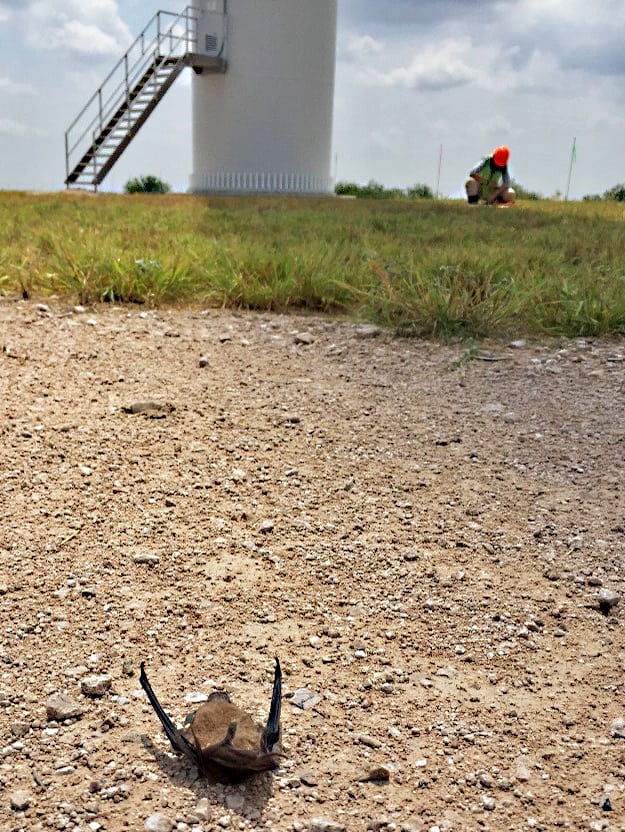Share this article
Student Presentation: Using acoustics to deter bats from wind turbines
Prey species such as tiger moths (Arctia caja) often use acoustics to deter approaching bats. But can people do the same thing?
Sara Weaver, a doctoral candidate at Texas State University, studied whether people could use ultrasonic acoustics to deter bats from wind turbines in South Texas.
She received second place in the Student Research in Progress presentation category for her talk “Testing Ultrasonic Acoustic Deterrents for Reducing Bat Fatalities at Wind Turbines in South Texas,” in which she presented her research at the 2018 annual TWS conference in Cleveland.
In collaboration with Duke Energy, NRG Systems, Bat Conservation International, and Vestas, the wind turbine manufacturer, Weaver and her colleagues tested how acoustic deterrent systems affect bats. They randomly selected 16 wind turbines of the 225 at the facility and retrofitted them with the systems. The systems operated nightly from July to October, when bat migration occurs. Then, they searched plots daily at the facility for bat fatalities.

Texas is the largest producer of wind energy in the United States, but acoustics may help reduce bat fatalities. ©Sara Weaver
“We were very excited to get the results we did,” she said. “There was an overall reduction of bat fatalities, particularly for hoary bats (Lasiurus cinereus) and Brazilian free-tailed bats (Tadarida brasiliensis). However, the northern yellow bat (Lasiurus intermedius) didn’t show a difference in fatalities. “We suspect it possibly has to do with echolocation characteristics between species,” she said. “Yellow bats utilize higher frequencies of echolocation.”
Weaver said she hopes to continue testing and looking at species-specific responses for different sound designs. The deterrent system she tested is now commercially available, she said.
“Texas is the largest producer of wind energy in the nation, with more than 13,000 turbines on the landscape,” she said. “Partners like Duke Energy that are open to collaboration and publication of data are vital to conserve bat populations.”
Header Image: Ultrasonic acoustics can deter bats from wind turbines. ©Sara Weaver








